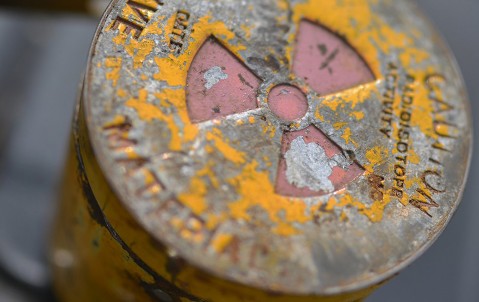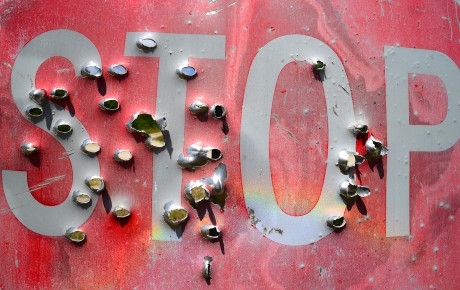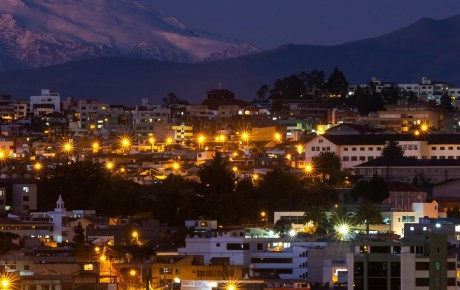
NCBR: an opportunistic terrorist threat?
The opportunistic use of chemical, biological and radiological agents continues to offer a unique threat.
Iran’s recent nuclear deal with the world’s major powers was triumphantly hailed by President Obama as a deal to make the world "safer and more secure". But, while it might reduce the chances of a particular nation state acquiring nuclear weapons, what are the chances of a terrorist group, such as Islamic State, getting hold of weapons of mass destruction, whether nuclear, chemical, biological, or radiological (NCBR)?
And what about other ‘rogue state’ sponsored terrorism? North Korea’s nuclear activity is much discussed but largely unknown, while politically unstable nuclear states such as Pakistan could also heighten the risk of nuclear weaponry falling into the ‘wrong’ hands. Failing states like Syria could also see NCBR weapons or material being made more available.
Probably the highest risk comes from terrorists creating a ‘dirty bomb’ – using conventional explosives to maximise the spread of a radioactive source.
Despite the uncertain picture, such is the complexity of these weapons and the logistical challenge of deploying them, it’s more likely, according to security risk management expert Jerry Smith – who led the United Nations’ joint field operations for the destruction of Syria’s chemical weapons programme – that terrorist use of NCBR based weapons will be more of an opportunistic incident than the result of a well-planned and long term plot.
The nuclear risk
For a non-state sponsored terrorist organisation, getting hold of nuclear material has always been “a pretty far-fetched scenario”, says Hiscox Terrorism Underwriter Michael Jordan. “A nuclear bomb is very difficult to make,” adds Smith. “The idea of a rogue state or individual manufacturing a nuclear bomb is nigh on impossible.” The threat of terrorists acquiring a ready-made nuclear warhead has also receded, says Smith. “Back in the early days of post-Soviet Russia, when security was not as robust, the US invested a huge amount of money in securing much of the nuclear material. The chances of a weapon now being acquired are probably a lot less than they were say 10-15 years ago.”
A state-sponsored terrorist organisation is also extremely unlikely to use a nuclear weapon. “It would be a pretty big risk for a rogue state to deploy nuclear material through a terrorist proxy. The state would need to be confident that its fingerprints are not all over any attack, because if they are...other governments would retaliate,” Smith adds.
The radiological threat
Probably the highest risk comes from terrorists creating a ‘dirty bomb’ – using conventional explosives to maximise the spread of a radioactive source – argues Smith. The main ingredient would be radiological sources, some of which are not particularly difficult to handle, and which are arguably more easily obtainable today than in the past. “A terrorist could acquire the radioactive material from a place where law and order has broken down. There are claims that various universities in Syria and Iraq, which possess radiological materials used for research purposes, have been overrun by IS.”
The chances are, however, that the conventional explosives used in a dirty bomb would kill more people than any radioactive substance it contained. But it’s the impact a dirty bomb would have on public perception that could cause the most disruption says Smith. “If a radiological device is used it doesn’t necessarily matter how clean the location has become after decontamination, people still perceive the area as being polluted for a long period.” This could have a big impact on businesses if they are denied access to their office or factory for a long period of time.
There is a risk of US and UK nationals, for example, going out to war zones in parts of Syria and Iraq, gaining knowledge in how to use chemical, biological or radiological weapons and then deploying these weapons in their home country.
The use by terrorists of chemical and biological agents in bombs would also be likely to spark public hysteria, but their manufacture and distribution is probably harder than that of a radiological weapon adds Smith. “Manufacturing chemical weapons is not easy. That sort of skill set is limited to a few thousand people worldwide and has probably only been acquired through government work. The manufacture, storage, and deployment of these weapons are not easy.”
Japanese cult Aum Shinrikyo spent millions of dollars in trying to weaponise Anthrax, says Smith, only for the strain it acquired to turn out to not be poisonous. ”It’s all very well reading text books or going online but there isn’t usually enough detail [to make a bomb] and if there is, translating it into real work is very hard.”
Returning fighters
Despite the logistical difficulties, one possible threat is the use of NCBR weapons by radicalised fighters returning from Syria and Iraq. The International Centre for the Study of Radicalisation and Political Violence has estimated that by 2015, 20,000 foreigners had travelled to Syria and Iraq to fight, a fifth of whom came from Western European countries. “There is a risk of US and UK nationals, for example, going out to war zones in parts of Syria and Iraq, gaining knowledge in how to use chemical, biological or radiological weapons and then deploying these weapons in their home country,” says Hiscox’s Jordan.
If some of that [NCBR] material is happened upon and the people with the right knowledge have access to it, then I think they might consider using it as a weapon of opportunity.
But Jordan considers it harder to pull off such an attack. “What we have seen in the recent shootings in Tunisia and France is almost a simplification in the terrorist strategy, where attacks are conducted by a lone wolf or small terrorist cells. When it comes to the more sophisticated, large scale attacks which involve more planning, it appears that the authorities are able to intercept and prevent these from being carried out.”
Smith agrees: “I’d be more worried about returning fighters encouraging radicalisation or carrying out random individual attacks on the street such as the Lee Rigby murder in 2013. They will know that they are probably on a watch list somewhere and are therefore likely to be stopped, searched and interviewed. If they’re trying to smuggle some radiological material through there’s a good chance they won’t succeed.”
Risk to businesses
Given the logistical difficulties of mounting an attack using an NCBR weapon, Smith considers that the most likely scenario will be a terrorist taking advantage of an unforeseen opportunity: “I don’t think a huge amount of effort will be spent on acquiring NCBR material, but if some of that material is happened upon and the people with the right knowledge have access to it, then I think they might consider using it as a weapon of opportunity.”
How this will translate in terms of greater vulnerabilities for business is unknown although certain areas will have higher exposures: “If I was operating in Turkey or Jordan for instance then I would argue that those countries do have a greater NCBR threat,” concludes Smith. “And the threat is probably several orders of magnitude higher than in the UK, although that doesn't mean to say that it is still high. It's more of an opportunistic assessment.”
Hiscox launches new NCBR product
In response to the changing NCBR threat, Hiscox has relaunched its existing NCBR product to include broader coverage as well as enabling insureds to exclusively access the consultancy services of Control Risks following an NCBR attack.
“We have been writing NCBR cover since 2011, having recognised back then that standard property damage policies for terrorism excluded NCBR-related risks,” says Michael Jordan, Hiscox’s Terrorism Underwriter. “Our new wording responds to the changing security threats around the world and offers broader coverage for malicious acts as well as acts of terrorism. We will also cover the fees for Control Risks' consultancy services which may prove invaluable to insureds in managing their way through the crisis of an NCBR attack.”
Hiscox’s new NCBR product, offered with a maximum line size of US$25m, includes:
- Malicious acts as well as acts of terrorism – these could include a person or persons intending to do harm whether for political, religious or ideological reasons. They do not have to be linked to a terrorist group and the new wording removes the need for the act to be defined as an act of terrorism.
- Additional cover for the services of Control Risks – up to 10% of the overall limit for property damage/business interruption available to cover the consultancy fees of Control Risks and their market leading post-loss consultancy services.



